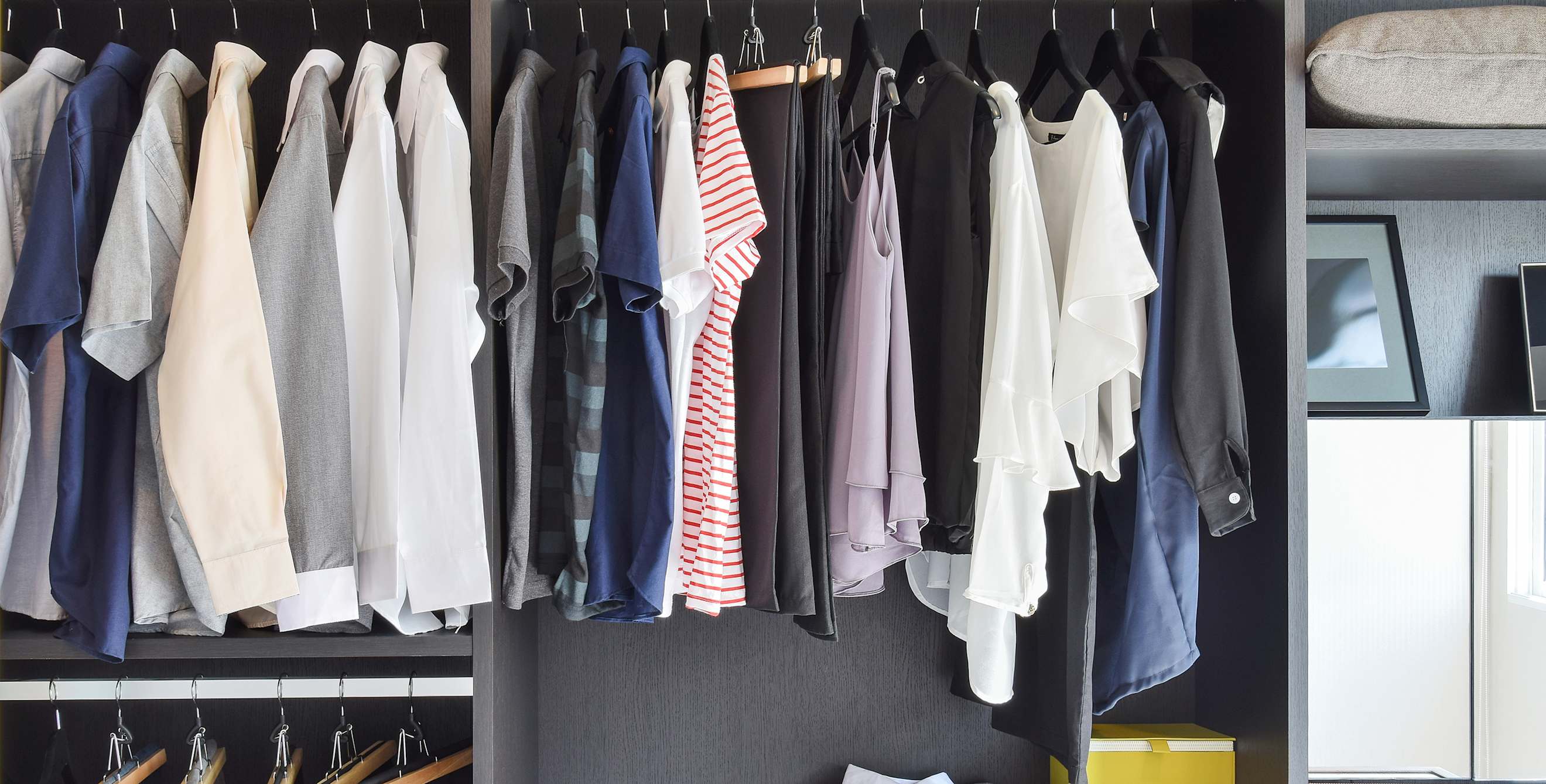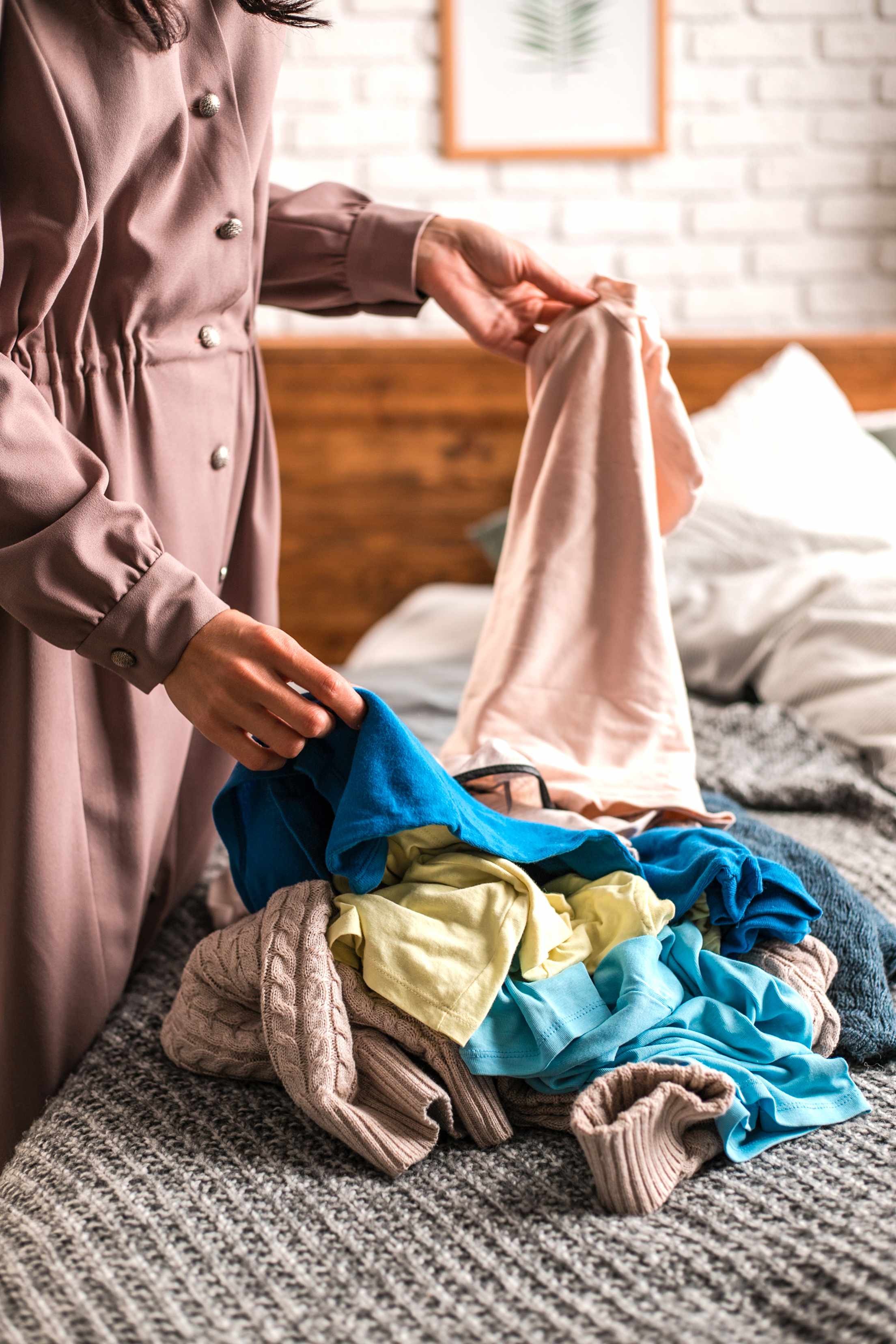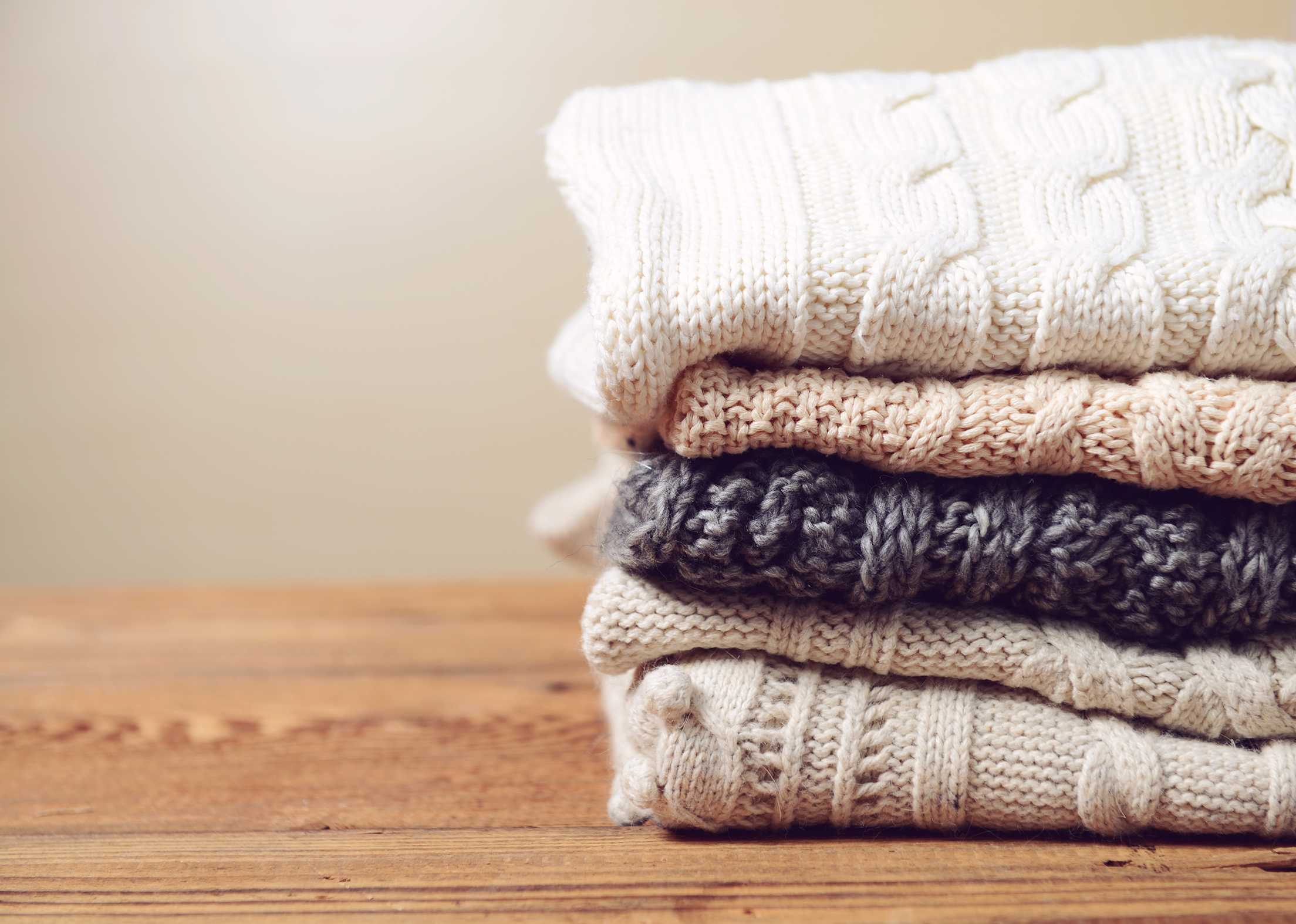
How to Clean Out and Organize Your Closet Without Stress
Take your closet from chaos to curated in 7 easy steps.

Joanna Linberg, the former home editor of Sunset and Better Homes and Gardens magazines, has spent the past decade helping people simplify and cherish their living space.
If choosing what to wear in the morning has you fending off decades-old tops and tottering piles to find your favorite sweater, it’s time for a closet clean-out.
According to Marie Kondo, author of The Life Changing Magic of Tiding Up and star of Netflix’s Tidying Up with Marie Kondo, “from the moment you start tidying, you will be compelled to reset your life.”
That’s a lofty goal, but organizing doesn’t have to be stressful. You can declutter your bedroom closet in a day.
Step 1: Empty your closet.
Take everything out and place all items in a staging area. Depending on the size of your wardrobe, this could be your bed or another room. Pull clothing from other parts of the house—out-of-season storage, under the bed, the coat closet, etc.—and include it in this process. Don’t stop to analyze your clothes at this point, just clear out the closet completely. There, it looks better already, doesn’t it?
Smart Tip: While the closet is empty, give it a quick wipe-down and vacuum or sweep.
Step 2: Choose your top 5.
Sorting clothing is hard: It’s so often an expression of who we are or want to be, and every item has memories attached. Give yourself a guiding light: Select five favorite items from the pile and hang them somewhere prominent. These don’t have to match or constitute a full outfit, they’re simply the pieces you will judge the rest of your wardrobe against.

Sorting each item individually is key to deciding what to keep and what to let go.
Step 3: Sort everything.
Designate three areas to sort clothes into: keep, try on, and donate. Handle each item individually and compare it to your five favorites. Do you like it almost as much? Does it make one of your favorites sing? Is it consistent with their style? Depending on your answer, sort the item into the appropriate pile.
Once you’re done sorting, immediately try on the items you set aside earlier. (If you wait, you’re more likely to pile them back in your closet and leave them there.) Be tough. Don’t ask objective questions such as, “Does this fit? Is this a high-quality piece?” A positive answer isn’t reason enough to keep it. Instead, ask yourself subjective questions: “Does this make me feel great? Does this match my current style?” Those answers are more revealing about whether or not the piece belongs in your wardrobe.
If you’re stuck, ask yourself: “Would I buy this again at twice the price?” Or do you just like it because it’s already in your closet?
Smart Tip: Rehome your unwanted items at local charities and thrift stores. High-quality work wear can go to an organization like Dress for Success that offers low-income women outfits for interviews. Bridesmaid and prom dresses can find a second wearer through charities like The Princess Project and Becca’s Closet. Stores like ThredUp and Buffalo Exchange consign or buy your items to earn you cash.
Step 4: Make room.
Anything that used to live in your closet that isn’t wardrobe related is better stored somewhere else. This includes extra bedding, keepsakes, sports equipment, etc. It’s tempting to use every available inch, but the most user-friendly closet has some margin.
Step 5: Assess storage needs and make adjustments.
Before putting a single piece of clothing back in the closet, take a look at what made the cut and the existing storage system already in place. Do you own 15 blazers but only a single closet rod? Put the rod as high as you can and install another beneath it to double up on hanging space. Are you a shoe collector with nary a shelf to rest them on? Add them. Are you a piler whose towers often tumble or obscure the items at the bottom? Buy square baskets and place them on their side with the opening facing out rather than up.
After figuring out your specific needs, consider these tips:
- If your budget allows, use the same hangers, baskets, and other storage supplies throughout the closet. Uniformity is space-efficient and attractive, meaning you’re more likely to notice when that pile of scarves is harshing your neatnik vibes.
- If you have room, it makes sense to pull your dresser into your closet so all your clothing is in one place. Plus, it opens up your room and gives you more clutter-free space.
- Look outside the closet category for the best storage tool: Clutches fit perfectly into magazine files. A vertical paper towel holder can hold stacks of cuffs. Unused baking dishes can hold socks and organize drawers.

Limit stacks to six high to avoid tippy towers.
Step 6: Put clothing back strategically.
An organized closet isn’t just about storage, it’s about making it easy to find what you need. Before returning items to your closet, think through how you typically choose clothing in the morning. Then, arrange things by the category that’s the best starting point for you, such as color or types of items.
Are you the type to pick out an outfit ahead of time? If so, devote a hook or shelf to house the look until morning. Do you tend to re-wear the same pair of jeans or the same sweater a couple days in a row? Designate a shelf to store once-worn items so they don’t land on the floor.
After going through this process, your closet might have some bare spots. That’s OK. Decluttering and design experts Cary Fortin and Kyle Quilici of New Minimalism tell their clients to redefine the meaning of full. Instead of considering a hanging rod stuffed so tightly it’s hard to remove anything “full,” consider it “full” when there is plenty of room to easily store and retrieve what you need.
Smart Tip: Limit stacks of sweaters, T-shirts, and jeans to six high to avoid tippy towers.

Simple strategies will help keep your closet pristine and perfectly organized.
Step 7: Maintain your organized closet.
This might be the hardest step in the entire process: Keeping things neat. Start by taking a long look at what you just accomplished. Note how a tidy closet makes you feel and try to channel that feeling at the end of the day as motivation to put things in their proper place. Here are a few more strategies:
- If you notice a consistent problem—say, you keep kicking your shoes off into the corner—think of a storage solution that works with your natural tendencies. Put a basket in that corner for your most-used shoes, for example.
- Follow the One In, One Out rule. When you buy a new item of clothing, take a few minutes to cull something you’re not as excited about anymore.
- When you first put your clothing back, place the hangers in backward. When you wear an item, turn the hanger around. After three to six months, any items whose hangers are still backward are candidates for donation.
- If you don’t have room to keep all seasons of clothing out, try to switch your wardrobe all at one time each season to avoid overfilling your closet with a mix of tanks and heavy sweaters.